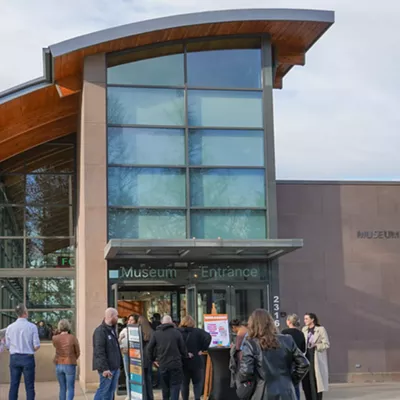QUESTION: I was wondering what to do with potted spring bulbs after they've flowered, faded and wilted. I've got a hyacinth and a daffodil (your basic grocery store floral department variety) and I hate to throw them out. Is there any way to salvage the bulbs or keep the plants alive and periodically blooming throughout the year? - Sophie Blaine, Spokane, WA
MARY JANE: Flowering bulbs make great gifts that brighten up any kitchen or bedroom and reliably welcome a new year of growth every spring or summer if the bulb is later planted in your yard or garden. Some bulbs can be planted in the spring, including gladiolas, Dutch iris and anemone. Other bulbs, such as daffodils, tulips or hyacinths, should be planted in the fall. If someone has given you a basket of daffodils in February, keep them inside until they are through flowering. Afterwards, let the plant go dormant by not watering it and by storing it in a cool, well-ventilated place (a garage, shed or cool basement). Remember though, that resident squirrels or mice may view them as dinner, so keep the bulbs out of reach. When it's time to transfer it outside, plant the bulb to a depth double the size of its height: If the bulb is two inches high, dig a hole four inches deep and cover the bulb well. Come spring, the bulbs will magically appear, ready to offer you a colorful display once again.
Bulbs, corms, and rhizomes are all underground stems that store all of the food they need for growth. When placed in the ground, they produce a variety of flowering plants. Most people think of all of these as "bulbs," and gardeners generally treat most of them in similar ways.
Rhizomes are thick, horizontal stems with roots on the bottom and buds on the top of the stem. Dahlias and some of the irises are rhizomes. Corms are round and bulbous. A true bulb is a very short, vertical, underground stem, with a swollen part (bud) surrounded by overlapping fleshy leaf bases or scales. Examples are tulips, daffodils, lilies and hyacinths. When planted, roots sprout from the base of the bulb, and the tip of the bulb produces the flower stem. Corms may look like bulbs, but are solid, without the overlapping leafy scales. Examples include crocus, gladiolus and giant trillium.
Purchase bulbs in the proper season for planting. Pay attention to the firmness, weight and general condition of the bulb, not just the size. When you hold the bulb in your hand, it shouldn't feel squishy or loose. Firmness is good. A quality bulb should also feel somewhat heavy. Choose bulbs free from bruises or deep cuts. The best corms to plant are fairly hard and plump.
Many gardeners have definite opinions about how they like colors arranged in their yards. Be on the lookout for neighborhood gardens that you find striking. What is it about the garden that attracts you? Is it the number of particular kinds of flowers that catches your eye, or is it the arrangement of colors within the space? Try working with complementary colors. Dark purple tulips are often more prominent when something yellow is nearby. Bright red tulips hidden among green shrubs will cause almost anyone to take a second look.
If you end up with unlabeled bulbs and aren't sure what color their flowers will be, then plant a "surprise" bed in your garden. After they flower and you discover the color of each flower, you can mark them for transplanting later. Tie ribbons around the base of the flower stalk, or mark the different colors with a garden stake. If you have a wild side in your nature, you may like the look of a multi-colored area in your garden, with little regard for "planning" the color combinations.
A hillside planted with bulbs simply comes alive in the spring and summer and is easier to maintain than trying to safely mow a steep piece of ground. Perhaps you've noticed those brave homeowners who transform their entire front yards from seas of green grass into mounds of flower bulbs and shrubs.
When figuring out where to plant different colors, remember that different bulbs may bloom anywhere from late winter to sometime in the fall. The well-known snowdrop often shows itself at the end of winter, marking the first hint of the spring to come.
What better gift to give your family and neighbors than to introduce them to some new bulbs each year! Although backyard gardens are a favorite, remember to treat your postal carrier and others walking down the street with color and beauty in the front of your house as well.
Publication date: 03/06/03
















